B-1B GUNSHIP: BOEING’S PLAN TO RUN BIG GUNS ON THE LANCER
- By Alex Hollings
Share This Article
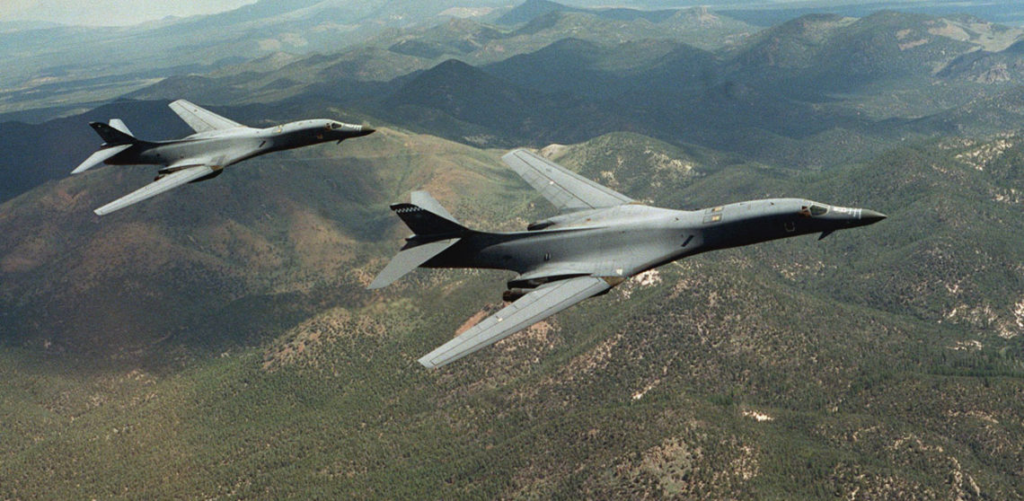
The B-1B Lancer has long served as America’s only supersonic heavy payload bomber, but for a time, Boeing considered extending its life as a high-speed gunship that would combine the firepower of the Spooky AC-130 gunship with the speed and maneuverability of an oversized fighter.
The Rockwell B-1B Lancer is a viable sweep-wing bomber straight out of the Cold War, complete with massively powerful engines that grant it both immense speed and a payload capacity that exceeds that of the gargantuan B-52 Stratofortress. The first B-1 took to the skies in 1974, but the platform itself didn’t enter service until more than ten years later, thanks to the complex and rapidly developing technological environment of the Cold War. Slated to be replaced by platforms like the AGM-86 cruise missile and the B-2 Spirit stealth bomber before it even entered service, the B-1B Lancer has defied the odds for over four decades.
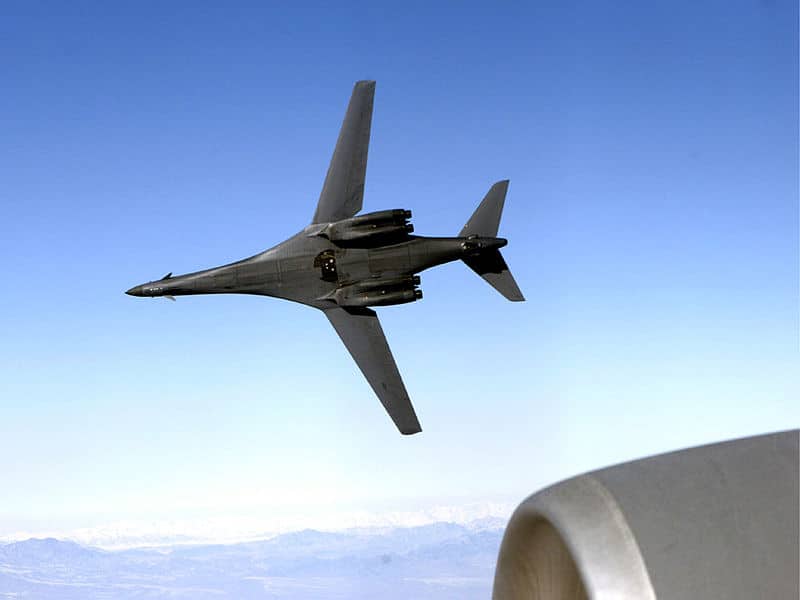
Today, it’s once again expected to be sent out to pasture in favor of the next stealth bomber, the forthcoming B-21 Raider, but in 2018, Boeing began toying with the idea of stretching out the Lancer’s shelf life by adding close air support to its mission profile.
How do you take a supersonic bomber and turn it into a close air support titan? According to patents filed by Boeing, it’s as simple as adding some really big guns.
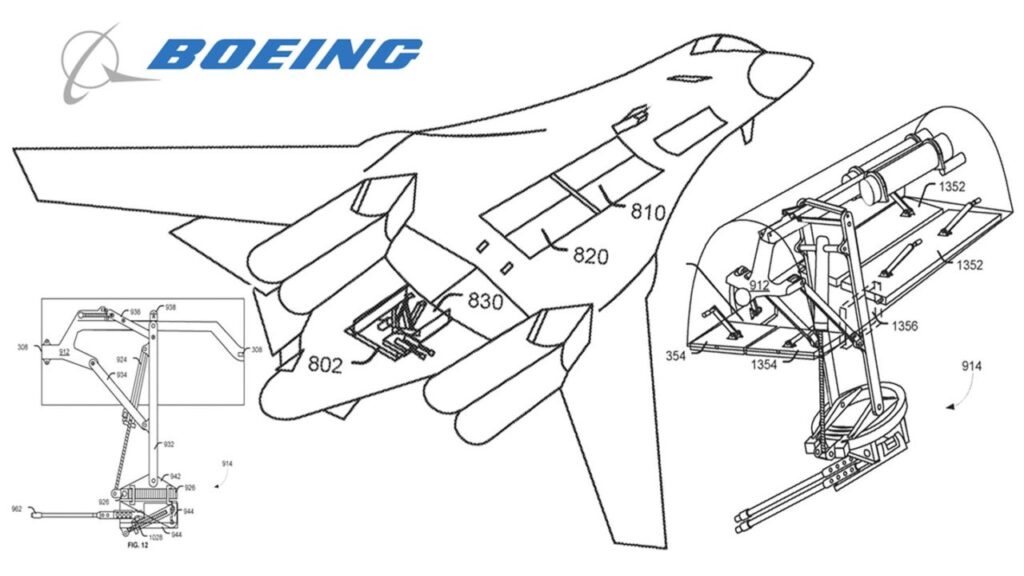
The patent actually depicts a number of different cannon-mounting solutions for the B-1B Lancer, including a system that places a retractable cannon in the Lancer’s large weapons bays. What makes these patents of particular interest is that they seem to require very little in the way of permanent modifications to the aircraft itself, meaning the conversion could be less expensive than broader overhauls. The lower the cost of such an effort, the more feasible it becomes — especially in terms of the B-1B, which is renowned for its high cost of operation.

Based on the illustrations, it appears as though Boeing doesn’t have its heart set on a specific cannon, and even shows two different sizes of them mounted in the same apparatus. Visually, these cannons look very similar to M230 30mm cannons or the Bushmaster cannon, which can run from 25mms to 40mms in size, as The Warzone has pointed out.
There would, in fact, be some benefit to Boeing’s approach to mounting these weapons on the B-1B as compared to the new AC-130J Ghostrider gunship and its predecessor, the Spooky AC-130. In the C-130-based gunships, the massive 105mm cannons are longitudinally mounted in a fixed cowling on the left side of the aircraft. In order to engage targets, Ghostrider gunships have to bank and circle over the target area to point the large cannon in the right direction.
By extending a cannon apparatus down from beneath the belly of the B-1B, the weapon can rotate a full 360 degrees while making target adjustments through a fire control module. This would allow a B-1B gunship to keep its weapon oriented on the target while the aircraft conducts various maneuvers.
However, there are also some significant limitations that one can’t help but consider when pitching the idea of a B-1B Gunship. Because the B-1B is designed to serve as a high-speed bombing platform, it almost certainly can’t maintain the low speeds achievable in an AC-130, despite its swing-wing design. The B-1B is also far more expensive to operate per hour than the still-in-production AC-130.
On the other hand, a B-1B Gunship could reach trouble spots far faster than any AC-130. The B-1B tops out at a blistering Mach 1.2, as compared to the AC-130 Ghostrider, which can’t exceed 420 miles per hour.
“They’re tuned for down low and mid-level altitudes, so you pretty much get pushed back into your seat,” Major “Coyote†Laney, a B-1B pilot instructor from the 28th Bomb Squadron, told me in 2019 during an interview for Popular Mechanics.
“The acceleration just keeps on coming—you can go right through the sound barrier pretty quick,â€
Not as crazy as it might seem?
Despite being designed to penetrate Soviet airspace by flying fast and low, the B-1B Lancer has nonetheless found itself serving in a close air support role at times throughout the past two decades of the Global War on Terror. Thanks to the addition of a Lockheed Martin-sourced Sniper Advanced Targeting Pod, the Lancer can now deliver ordinance more precisely than ever before. The bomber’s massive fuel stores and heavy payload capabilities allow the B-1B to loiter over a combat zone for hours, before using its onboard fire control system to manage targeting data relayed from ground troops or its sniper pod to deliver ordnance with pinpoint accuracy.
“I remember in Afghanistan where troops needed help across the entire country and I could go 1.2 Mach all the way there and still have enough gas to hang out when I got there,†Laney explained.
“So you can take a platform that’s on the East side of Afghanistan and 15 or 20 minutes later, I’m showing up when there’s no one else for several hundred miles that could help.â€
However, it seems clear that American ground forces don’t like to rely on precision-munitions from high-flying or far-flung weapons systems when they’re engaging the enemy. The long-standing love affair between U.S. military grunts and the A-10 Thunderbolt II speaks to this preference. When it comes to engaging the bad guys, ground troops prefer aircraft that actually have their eyes on the target.
However, a B-1B gunship may be able to split this difference by utilizing a combination of precision-guided bombs and onboard cannons. As it stands, B-1B Lancers are already capable of putting on quite the spectacle when delivering air support to ground troops.
“If I’m talking to a guy on the ground and I have my sensor on him … we can drop weapons seven miles away, or we can drop lower, drop them closer,” said Lt. Col. Dominic “Beaver” Ross, director of operations for the 337th Test and Evaluations Squadron.
“We’re not going to drop them as low as an A-10, but we are going to do shows of force where we’re 500 feet overtop of their head.”
Will a B-1B Gunship ever actually happen?
That’s tough to say, but for now at least, it seems unlikely… but that doesn’t mean the end for this concept or these patents. The premise of installing modular close-air support cannons in an aircraft like the B-1B could easily be modified for use in other aircraft as well. In fact, the Air Force is already experimenting with the idea of using modular weapons systems in aircraft that were intended for cargo carrying purposes.
Currently, the B-1B is expected to slip into retirement in the later end of the 2020s, as more B-21 Raiders roll off the assembly line and into service. While the forthcoming stealth bomber promises to be the most advanced aircraft of its type ever to take to the skies, it doesn’t offer many of the same capabilities the B-1B does. Like the B-2 Spirit it will also replace, the B-21 is expected to be subsonic, leveraging its stealth more than its speed to accomplish its missions.
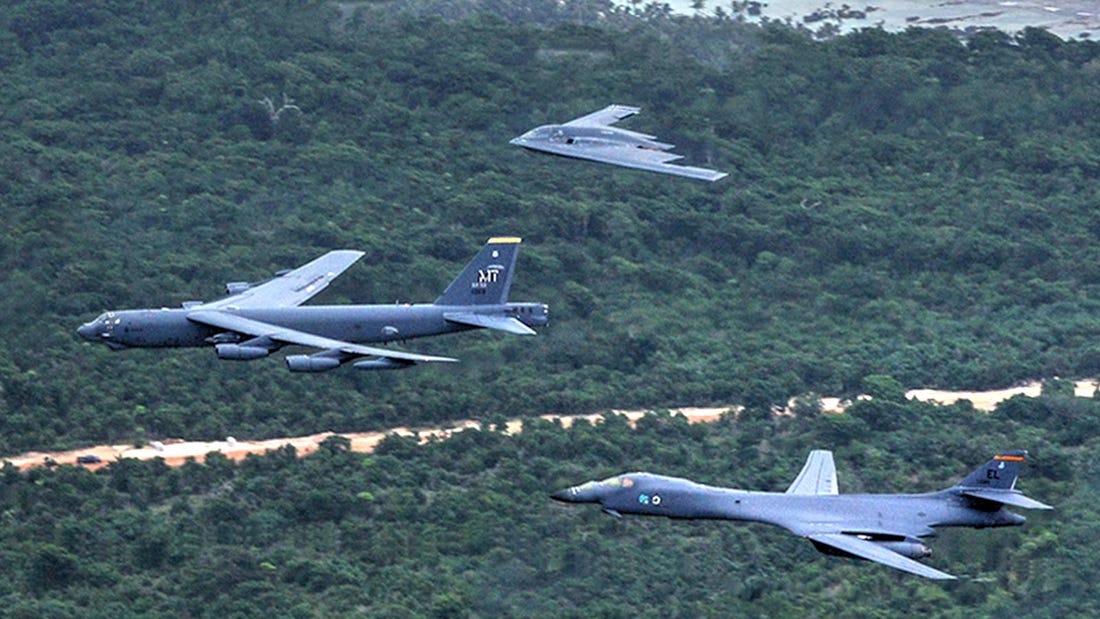
Geopolitically, the B-21 may also be more complicated to use than the B-1B. The Lancer was converted into a strictly non-nuclear bomber platform in 2011, in accordance with the START Treaty between the United States and Russia. Retiring the B-1B will mean using nuclear capable B-21s for conventional airstrikes, which, because of its use a nuclear-weapon delivery bomber, could exacerbate tensions with America’s diplomatic opponents. Headlines claiming America is sending “nuclear bombers” to any region B-21s are deployed to would technically be accurate, despite misrepresenting the role these bombers may play.
In that regard, the B-1B may see some lawmakers and defense officials championing its continued service as has happened in the past. When a new airframe is slated to replace an old one, but lacks the capabilities of its predecessor, there will always be some arguing in favor of old and reliable.
While it seems unlikely that we’ll see B-1B gunships in the air any time soon… In the rapidly shifting world of defense priorities, one can never say never.
Related Posts
Sandboxx News Merch
-

A-10 ‘Thunderbolt Power’ Framed Poster
$45.00 – $111.00 Select options This product has multiple variants. The options may be chosen on the product page -

‘Kinetic Diplomacy’ Coaster (1)
$7.00 Add to cart -

‘Sandboxx News’ Camo Trucker Hat
$29.00 Select options This product has multiple variants. The options may be chosen on the product page

Alex Hollings
Alex Hollings is a writer, dad, and Marine veteran.
Related to: Airpower, Military History
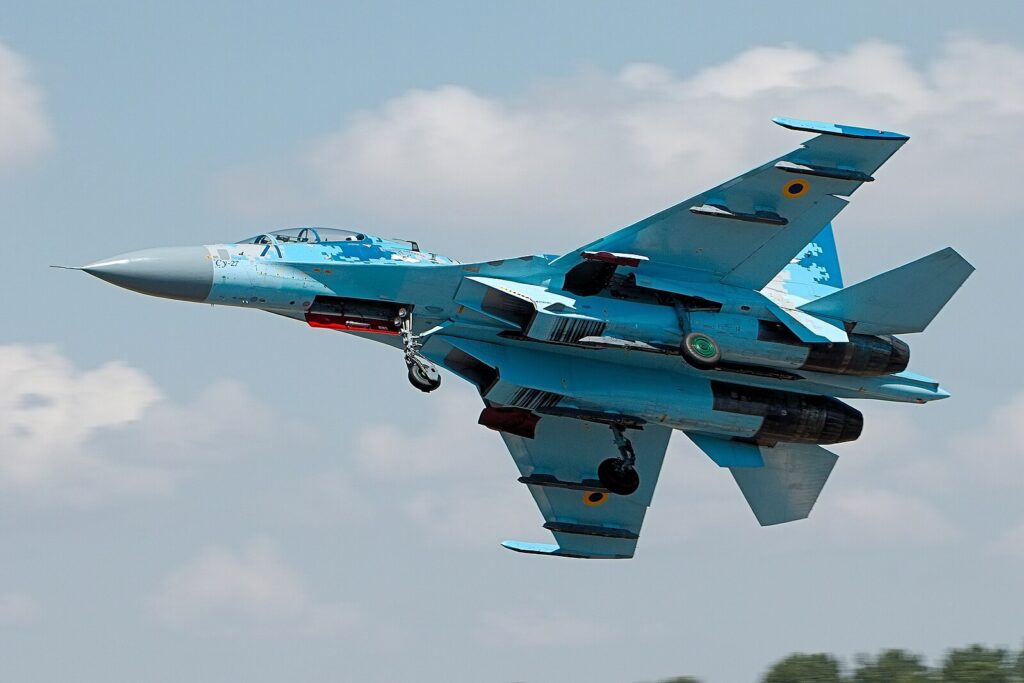
Where do NATO reporting names come from?

The A-12 Avenger II would’ve been America’s first real ‘stealth fighter’
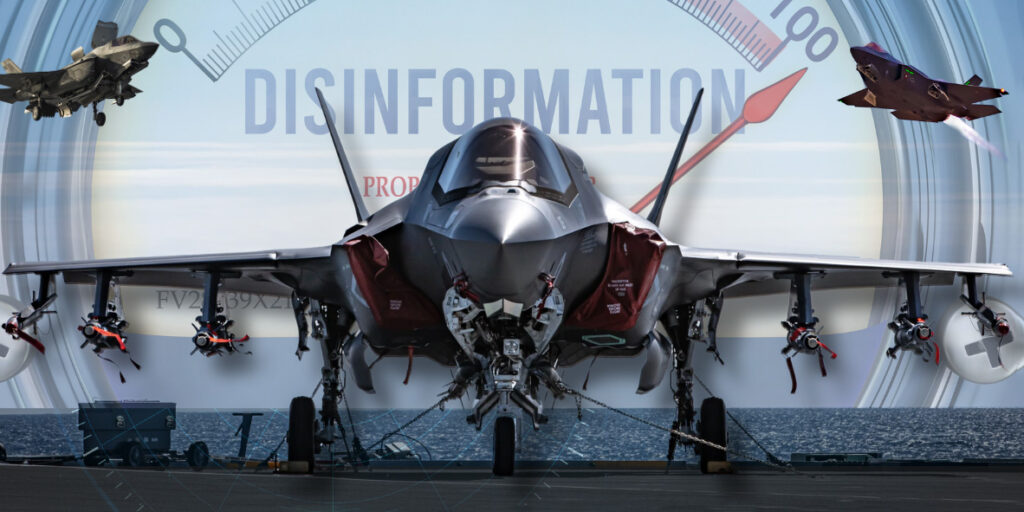
Why media coverage of the F-35 repeatedly misses the mark

It took more than stealth to make the F-117 Nighthawk a combat legend
Sandboxx News
-

‘Sandboxx News’ Trucker Cap
$27.00 Select options This product has multiple variants. The options may be chosen on the product page -

‘AirPower’ Classic Hoodie
$46.00 – $48.00 Select options This product has multiple variants. The options may be chosen on the product page -

‘AirPower’ Golf Rope Hat
$31.00 Select options This product has multiple variants. The options may be chosen on the product page -

‘Sandboxx News’ Dad Hat
$27.00 Select options This product has multiple variants. The options may be chosen on the product page
